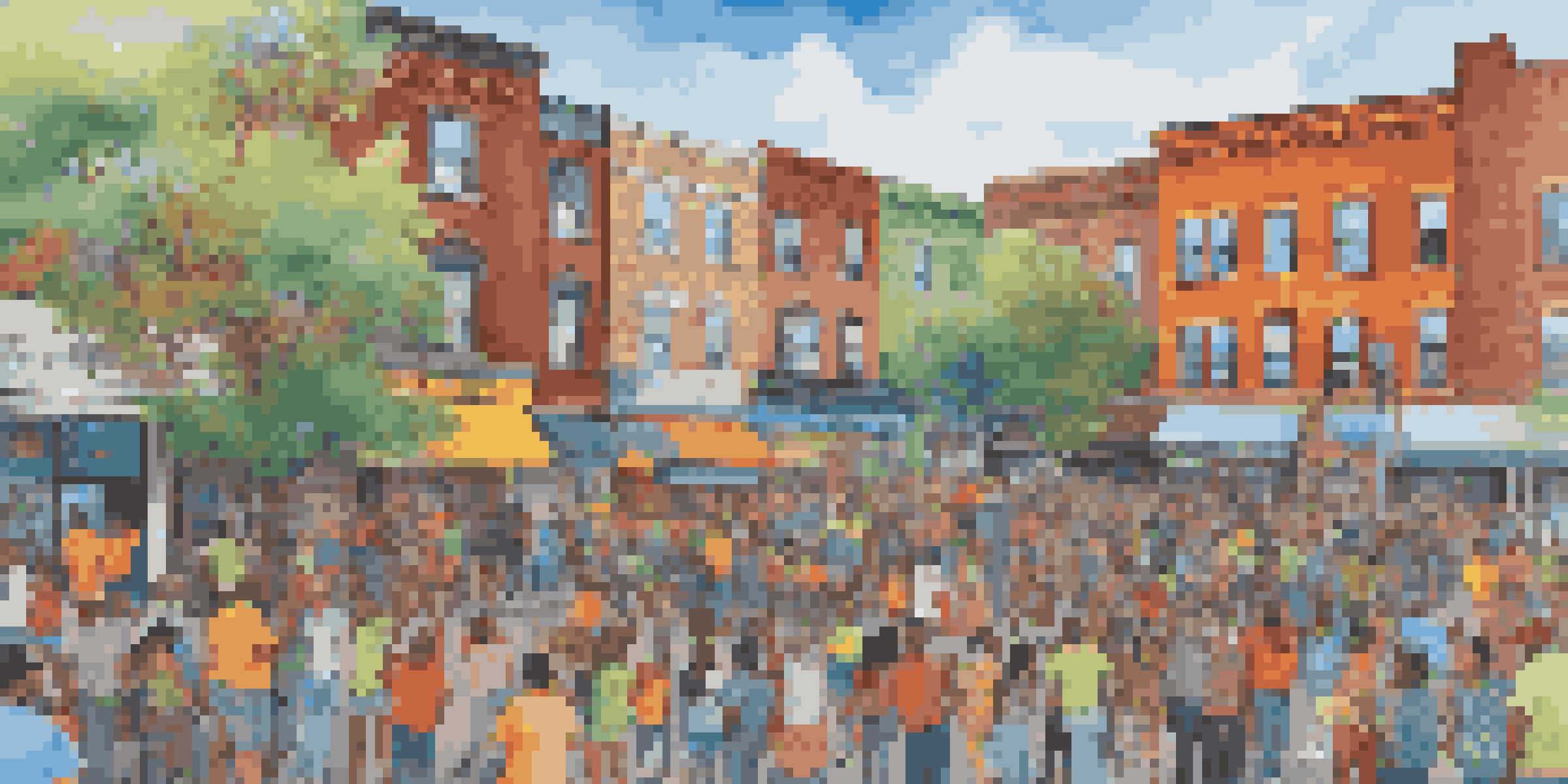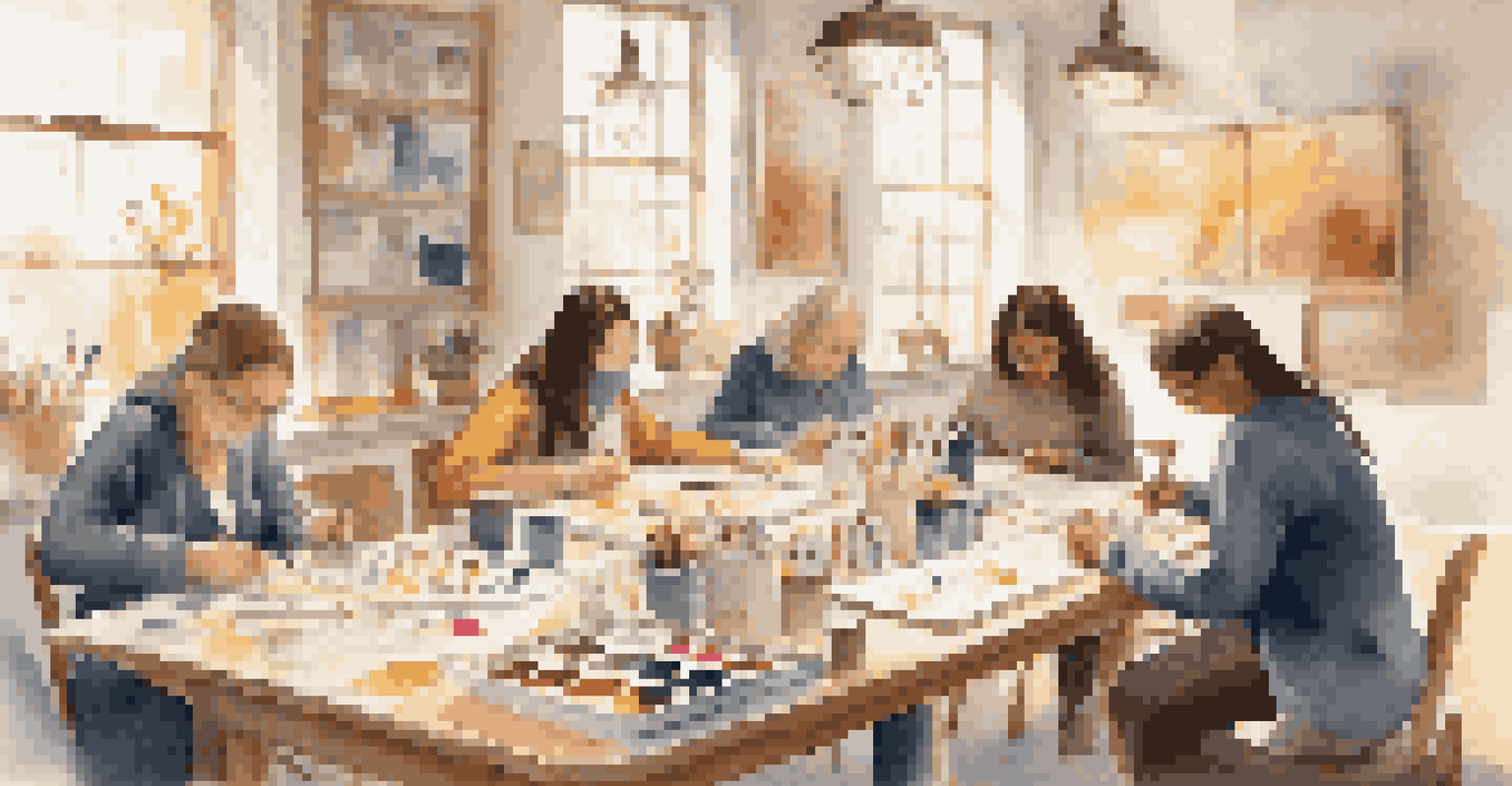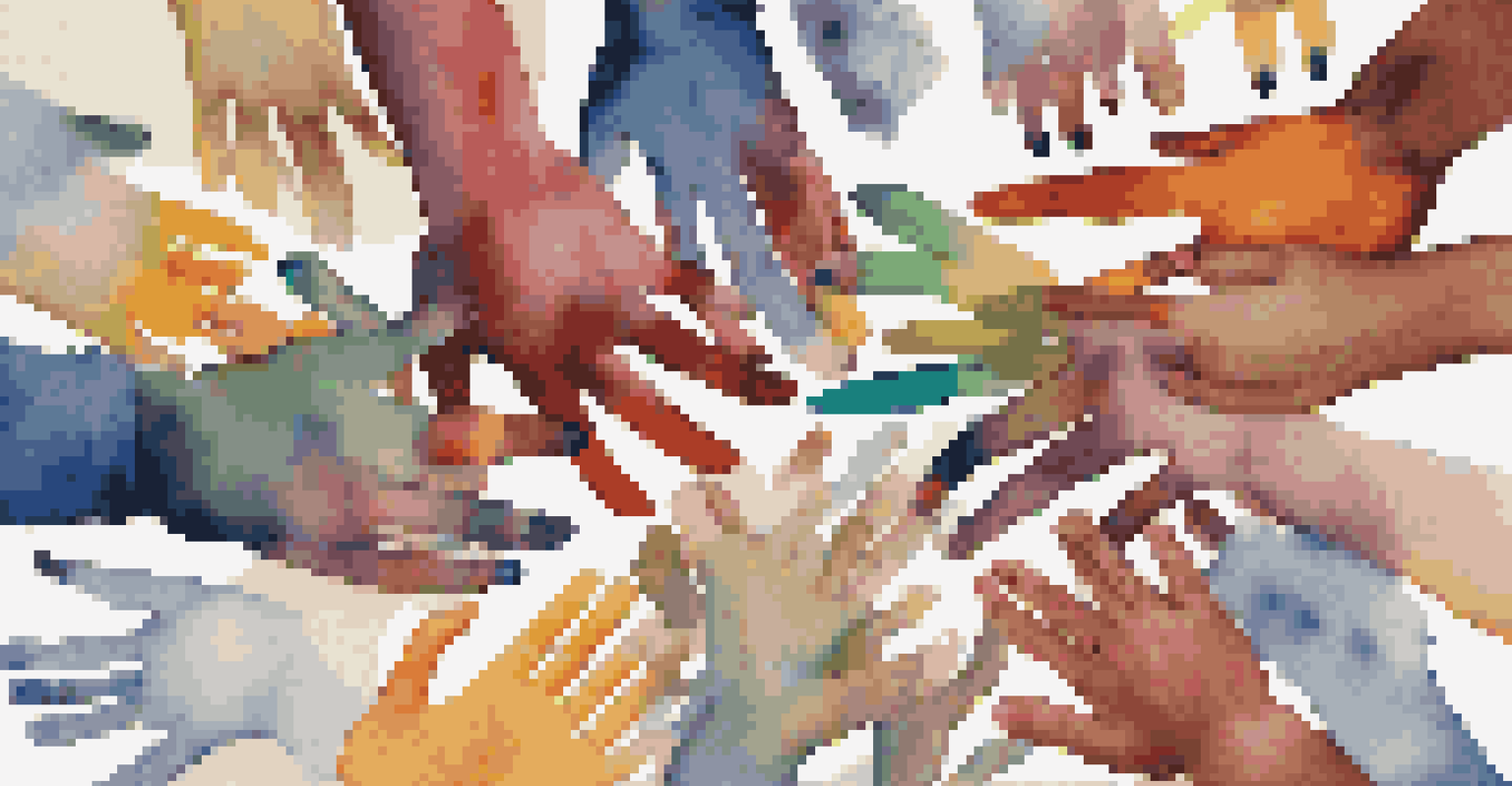Civic Identity and Art Therapy: Healing Through Expression

Understanding Civic Identity and Its Importance
Civic identity refers to the sense of belonging and responsibility individuals feel towards their community and society at large. It's about recognizing oneself as part of a larger whole, contributing to collective well-being. This identity shapes not only how we see ourselves but also how we act in relation to others, promoting engagement and active participation.
Art enables us to find ourselves and lose ourselves at the same time.
When people feel a strong civic identity, they are more likely to volunteer, advocate for important causes, and support local initiatives. This connection can lead to stronger communities, where individuals feel empowered to make a difference. In essence, civic identity is the glue that holds societies together, fostering cooperation and mutual respect.
Art therapy can play a significant role in enhancing civic identity by allowing individuals to explore and express their feelings about their community. Through creative expression, participants can reflect on their experiences and develop a deeper understanding of their place within the societal fabric.
The Basics of Art Therapy and Its Benefits
Art therapy is a therapeutic approach that uses creative processes to help individuals express their emotions and cope with various challenges. It provides a safe space for people to explore their thoughts and feelings through artistic mediums like painting, drawing, or sculpture. This form of therapy can be particularly beneficial for individuals who find it hard to articulate their feelings verbally.

The benefits of art therapy are vast, ranging from reduced anxiety and depression to improved self-esteem and emotional resilience. By engaging in creative expression, individuals can also gain insights into their personal experiences, leading to healing and growth. Essentially, art therapy not only promotes mental well-being but also encourages self-discovery.
Civic Identity Fosters Community Engagement
A strong civic identity encourages individuals to volunteer, advocate for causes, and participate actively in their communities.
Moreover, art therapy can strengthen community ties by bringing people together in collaborative projects. When individuals create art collectively, they share their stories and perspectives, fostering a sense of belonging and understanding.
How Art Therapy Enhances Civic Engagement
Art therapy can serve as a catalyst for civic engagement by encouraging individuals to reflect on their roles within their communities. When people create art that represents their experiences and feelings about societal issues, it can inspire action and advocacy. This reflective process often leads to a greater sense of responsibility towards one’s community.
Creativity takes courage.
Through art, participants can explore themes of social justice, identity, and community challenges, which can ignite a passion for change. For example, a mural project might bring attention to local issues, sparking conversations and prompting community members to take collective action. This kind of engagement creates a ripple effect, inspiring others to participate.
Additionally, art therapy can help break down barriers between diverse groups, promoting inclusivity and understanding. By working on joint projects, individuals from different backgrounds can share their stories, fostering empathy and a shared sense of civic identity.
Real-Life Examples of Art Therapy in Communities
Across the globe, there are numerous examples of art therapy being utilized to strengthen civic identity and promote healing. Community art programs often bring together individuals from various backgrounds, allowing them to share their experiences and perspectives through creative expression. These initiatives not only beautify neighborhoods but also foster connections among residents.
One notable example is the 'Mural Arts Program' in Philadelphia, which engages community members in creating murals that reflect their stories and aspirations. This program has transformed blank walls into vibrant pieces of art that tell the stories of the community, enhancing civic pride and identity. Participants often report feeling more connected to their neighborhoods after being involved in such projects.
Art Therapy Enhances Self-Expression
Art therapy provides a safe space for individuals to explore and express their emotions, leading to personal healing and growth.
Another example is the use of art therapy in post-disaster recovery, where communities come together to heal through creative expression. In these situations, art becomes a powerful tool for processing trauma and rebuilding civic identity, as individuals share their experiences and work collaboratively towards recovery.
The Role of Facilitators in Art Therapy
Facilitators play a crucial role in art therapy sessions, guiding participants through the creative process while ensuring a safe and supportive environment. Their expertise helps individuals navigate their emotions and encourages them to express their thoughts through art. A skilled facilitator can recognize the unique needs of each participant, tailoring the approach to maximize the therapeutic benefits.
Moreover, facilitators foster a sense of community among participants by promoting collaboration and dialogue. They encourage sharing of personal stories, which can deepen connections and enhance the collective civic identity of the group. In this way, facilitators not only support individual healing but also strengthen community bonds.
It's important for facilitators to be trained in both art therapy techniques and community engagement strategies. This dual expertise allows them to create meaningful experiences that empower individuals to explore their civic identities while healing through art.
Challenges and Considerations in Art Therapy
While art therapy offers numerous benefits, there are challenges and considerations to keep in mind. One significant challenge is ensuring accessibility for all community members, particularly those who may face barriers due to finances, location, or social stigma. It's essential for programs to be inclusive and welcoming to create a diverse participant base.
Additionally, not everyone may feel comfortable expressing themselves through art, which can hinder participation. Facilitators must be sensitive to this and find alternative methods to engage individuals who may prefer different forms of expression. This may include incorporating storytelling or other creative outlets alongside traditional art-making.
Facilitators Strengthen Community Bonds
Skilled facilitators in art therapy promote collaboration and sharing, enhancing the collective civic identity among participants.
Another consideration is the need for ongoing support and resources. Effective art therapy programs require funding, trained facilitators, and community backing to thrive. By addressing these challenges, communities can maximize the healing potential of art therapy and enhance civic identity.
Looking Ahead: The Future of Civic Identity and Art Therapy
As we look to the future, the intersection of civic identity and art therapy holds immense potential for fostering healthier communities. Increasing recognition of the therapeutic benefits of creative expression can lead to more funding and support for art therapy programs. This, in turn, can create opportunities for individuals to connect with their civic identities in meaningful ways.
The ongoing evolution of technology also offers new avenues for art therapy, enabling virtual sessions that can reach wider audiences. Online platforms can facilitate creative expression and community engagement, breaking geographical barriers and promoting inclusivity. As communities adapt to these changes, art therapy will likely become an even more integral part of civic life.

Ultimately, nurturing civic identity through art therapy can lead to resilient communities where individuals feel empowered to advocate for themselves and each other. By continuing to explore and invest in these connections, we can foster healing and belonging in our society.